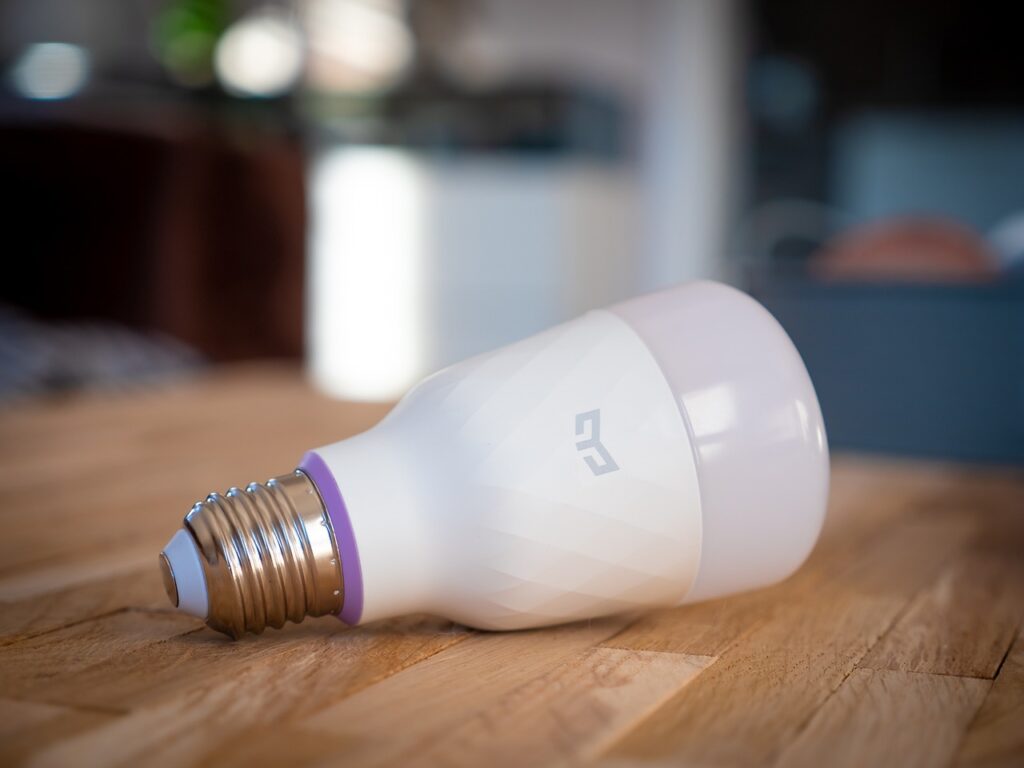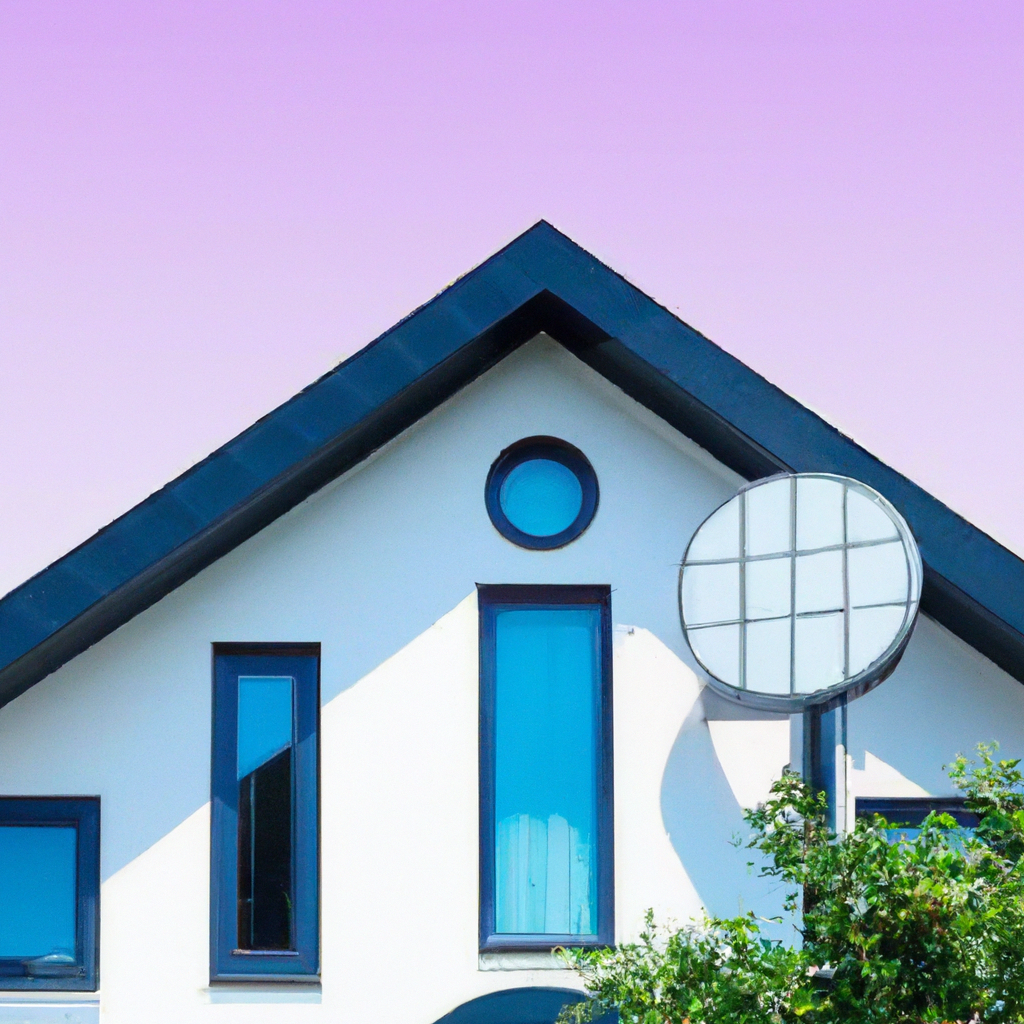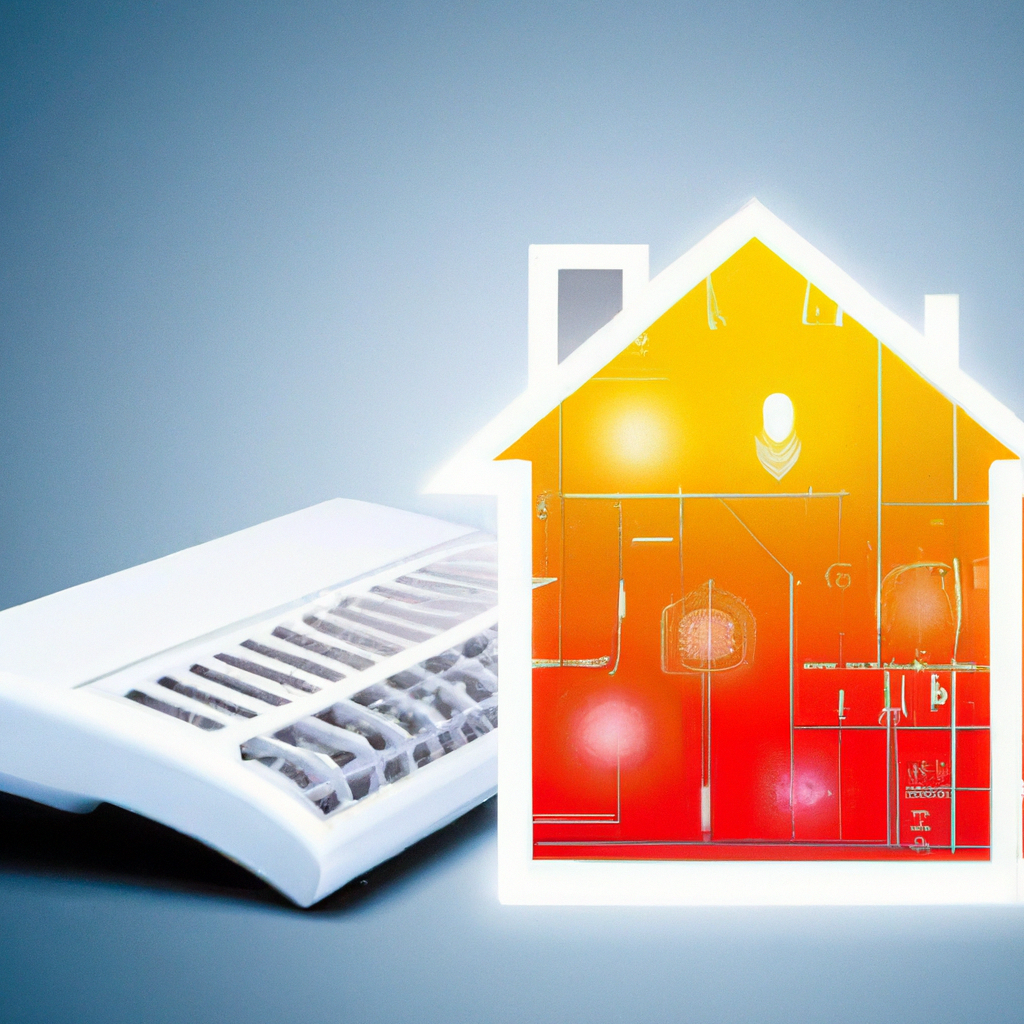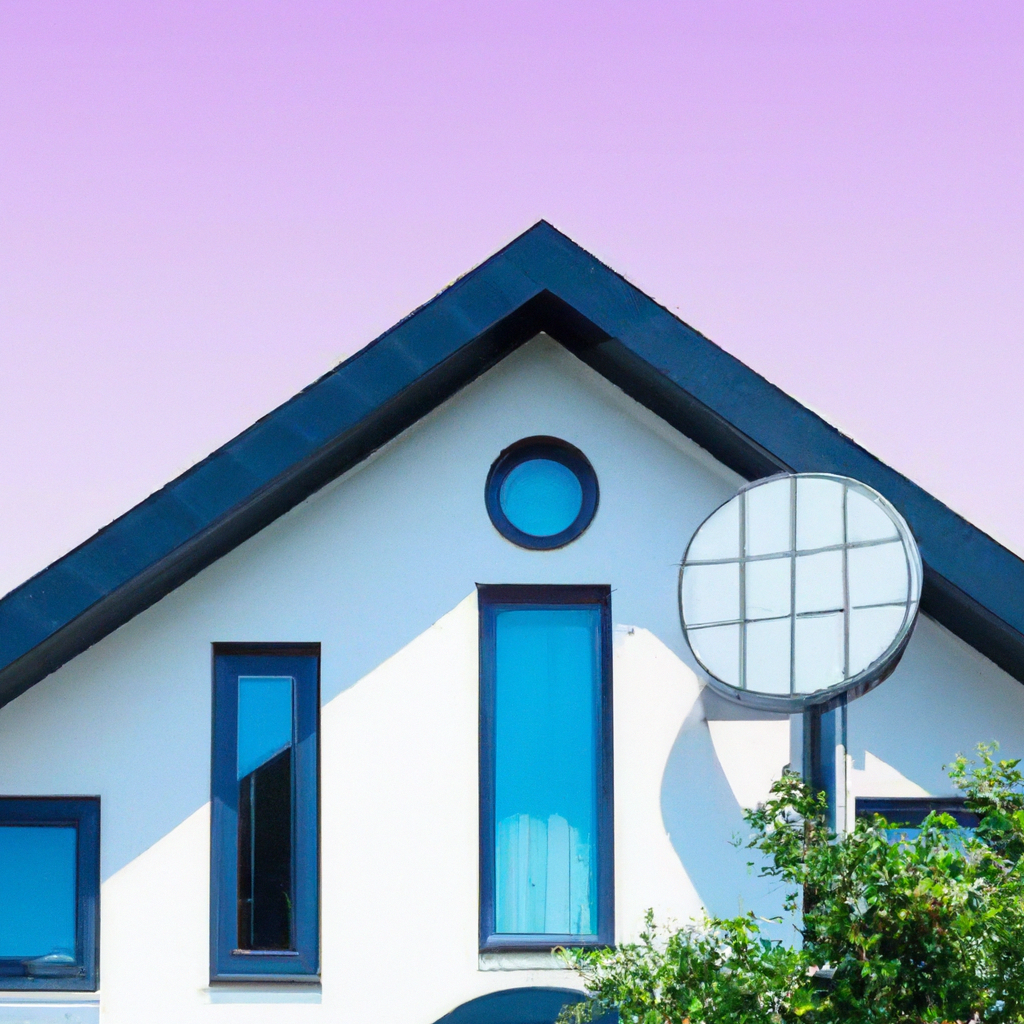Imagine a world where your home is not just a place to live, but a place that actively works with you to reduce your energy consumption. With smart home automation, this dream is becoming a reality. In this article, we will explore ten innovative ways that smart home automation can enhance energy efficiency, ultimately saving you money and benefiting the environment. From intelligent thermostat control to automated lighting systems, you will discover how technology is transforming the way we consume energy in our homes. Get ready to unlock the full potential of your smart home and embrace a greener, more sustainable lifestyle.
Monitoring and Controlling Energy Usage
In a world where energy consumption is a significant concern, it is crucial to monitor and control your energy usage effectively. Smart home automation provides you with the tools to do just that. With the help of smart metering, real-time energy monitoring, and appliance control, you can keep a close eye on your energy consumption and make informed decisions to reduce waste and save money.
Smart metering
Smart metering is the foundation of efficient energy management in a smart home. These devices provide detailed insights into your energy usage by collecting and transmitting data in real-time. With a smart meter, you no longer have to rely on estimates provided by your utility company. You can monitor your energy consumption on a more granular level, enabling you to identify energy-intensive appliances and take steps to reduce their usage.
Real-time energy monitoring
With real-time energy monitoring, you can track your energy usage at any given moment. Smart home automation systems allow you to view your energy consumption data in a user-friendly interface, giving you a better understanding of how your habits impact your energy bills. By having this information readily available, you can make real-time adjustments to reduce energy waste and ultimately lower your electricity costs.
Appliance control
Appliance control is a key feature of smart home automation that contributes to energy efficiency. With the ability to control your appliances remotely through your smartphone or voice commands, you can ensure that they are only operating when necessary. For example, you can turn off lights or lower the temperature on your thermostat while you’re away from home. This level of control allows you to avoid unnecessary energy consumption and ensures that your appliances are only using energy when you need them.
Optimizing Heating and Cooling Systems
Heating and cooling are major contributors to energy consumption. By optimizing these systems with smart home automation, you can significantly improve energy efficiency and reduce your environmental footprint.
Smart thermostats
Smart thermostats are an excellent addition to any energy-conscious home. These devices learn your temperature preferences, occupancy patterns, and even the weather conditions to create personalized heating and cooling schedules. With the ability to remotely control your thermostat, you can make adjustments while you’re away from home, ensuring that you only use energy when it’s necessary.
Zoned heating and cooling
Zoned heating and cooling allows you to divide your home into different zones and control the temperature independently in each area. By doing so, you can optimize energy usage by only heating or cooling occupied rooms, rather than wasting energy on unoccupied spaces. With the help of smart home automation, you can conveniently manage these zones through a central control panel or your smartphone, making it effortless to fine-tune your comfort levels while maximizing energy efficiency.
Geofencing
Geofencing technology utilizes your smartphone’s GPS to determine your location relative to your home. By setting up geofencing rules, you can automatically adjust your home’s temperature based on your proximity. For example, when you leave a certain radius from your home, the smart thermostat can lower the temperature to conserve energy. As you approach your home, the thermostat can raise the temperature to ensure a comfortable environment upon arrival. Geofencing eliminates the need to manually adjust your thermostat and ensures that you never waste energy on an empty house.

Efficient Lighting Solutions
Lighting plays a significant role in energy consumption, but with smart home automation, you have access to various solutions that optimize lighting efficiency and enhance your overall energy savings.
Smart lighting control
Smart lighting control enables you to adjust and automate your lighting based on your preferences and needs. You can control your lights remotely, create schedules, and even integrate them with other smart devices for seamless operation. This level of control allows you to ensure that lights are only on when necessary, reducing energy waste. Additionally, dimming capabilities offered by smart lighting control enable you to set the perfect level of brightness, which can further contribute to energy savings.
Occupancy and daylight sensors
Occupancy and daylight sensors are essential components of an energy-efficient lighting system. These sensors detect when a room is occupied or when there is ample natural light available. By integrating these sensors with your smart home automation system, you can automate your lights to turn on or off based on occupancy or natural light levels. This eliminates the risk of leaving lights on in unoccupied rooms or wasting energy when natural light is sufficient.
Automated dimming
Automated dimming provides you with the ability to set predetermined lighting levels throughout your home based on the time of day or specific activities. For instance, during the evening, the lights can automatically dim to a cozy level, creating a relaxing atmosphere. By setting appropriate dimming levels, you can reduce energy consumption and prolong the lifespan of your light bulbs. Automated dimming also provides convenience, as you no longer have to manually adjust lighting levels for different situations.
Reducing Standby Power Consumption
Standby power consumption, often referred to as vampire power, is the energy consumed by electronic devices when they are not in use but remain in standby mode. Smart home automation offers solutions to reduce this unnecessary energy consumption.
Smart power strips
Smart power strips are equipped with outlets that can be controlled remotely or automatically based on programmed schedules. By connecting your electronic devices to a smart power strip, you can easily turn off the power supply when they are not in use. This eliminates standby power consumption and reduces your overall energy footprint.
Energy-saving modes
Energy-saving modes are available in many smart devices and appliances. When activated, these modes adjust the device’s behavior to minimize energy consumption. For example, a smart TV may automatically dim or enter a sleep mode when not actively being used. By taking advantage of energy-saving modes, you can avoid standby power consumption and optimize energy efficiency in your home.
Power management automation
With power management automation, you can schedule your devices to turn on or off at specific times. For instance, you can set your computer to automatically shut down during the night when you won’t be using it. By automating power management, you can eliminate standby power consumption, ensuring that your devices are only using energy when necessary.

Smart Appliances and Energy Efficiency
Investing in energy-efficient appliances is an excellent step towards reducing your energy consumption, and when combined with smart home automation, the benefits multiply.
Energy-efficient appliances
Energy-efficient appliances are designed to perform the same tasks as their traditional counterparts while using significantly less energy. By upgrading to these appliances, you can achieve substantial energy savings. Smart home automation seamlessly integrates with energy-efficient appliances, allowing you to monitor and control their usage with ease. With features like remote control and energy usage tracking, you can ensure that your appliances are operating at optimal efficiency.
Smart refrigeration control
Refrigerators are one of the most energy-intensive appliances in a home. With smart refrigeration control, you can take proactive steps to enhance energy efficiency. For example, some smart refrigerators offer features like vacation mode, which adjusts temperature settings and reduces energy consumption when you’re away for an extended period. Additionally, you can receive notifications if your refrigerator door is left open, preventing unnecessary energy waste.
Optimized laundry scheduling
Laundry appliances, such as washers and dryers, can consume substantial amounts of energy. With smart home automation, you can optimize laundry scheduling to take advantage of off-peak electricity rates or high solar generation periods. By using your energy monitoring data and time-of-use pricing information, you can schedule your laundry cycles to coincide with the most cost-effective and energy-efficient times, reducing both your energy bills and environmental impact.
Intelligent Water Management
Water is a precious resource, and smart home automation provides tools to manage water consumption efficiently.
Smart irrigation systems
Smart irrigation systems utilize weather data, soil moisture sensors, and localized water restriction information to optimize watering schedules. By integrating these systems with your smart home automation, you can water your lawn and plants based on actual need, reducing water waste. Additionally, the ability to control your irrigation system remotely means that you can make adjustments on the go, ensuring efficient water usage even when you’re away from home.
Leak detection and prevention
Water leaks can be a significant source of water waste and costly damage. Smart home automation can help detect and prevent leaks by monitoring your water usage patterns and detecting abnormalities. Leak detection sensors can be installed in key areas such as under sinks or near water appliances. If a leak is detected, you can receive real-time notifications on your smartphone, allowing you to take immediate action and prevent further damage.
Water usage tracking
Smart home automation allows you to track your water usage in real-time, much like energy monitoring. By having this information readily available, you can identify areas where you may be using excessive water and make adjustments accordingly. For instance, you may discover that you’re using significantly more water for showers compared to previous months. Armed with this knowledge, you can take steps to reduce usage, such as installing low-flow showerheads or implementing shorter shower times.

Renewable Energy Integration
Integrating renewable energy sources into your smart home automation system allows you to further increase energy efficiency and reduce reliance on traditional grid-based electricity.
Solar panel optimization
Solar panels can generate clean and renewable energy, but their efficiency can be maximized with smart home automation. By integrating solar panel optimization features into your automation system, you can monitor energy generation, track performance, and adjust settings to maximize efficiency. For example, you can adjust the angle of your solar panels to capture the most sunlight or set up alerts to notify you of any issues with your solar array.
Battery management systems
Battery storage systems are an ideal complement to solar panels, allowing you to store excess energy for use during peak demand periods or when the sun is not shining. With smart home automation, you can monitor the charge level and performance of your batteries, ensuring that they are operating at optimal efficiency. Additionally, you can program your system to prioritize using stored energy during peak electricity pricing periods, reducing reliance on the grid.
Smart energy storage
Smart energy storage solutions enable you to optimize energy usage by intelligently managing when and how stored energy is used. These systems can monitor your energy consumption patterns, prioritize the use of renewable energy, and even anticipate future energy demands based on historical data. By integrating smart energy storage into your automation system, you can take full advantage of your renewable energy sources and further reduce your dependence on the grid.
Integration with Time-of-Use Pricing
Time-of-use pricing is a billing method that charges different rates for electricity consumption based on the time of day. Smart home automation offers features to optimize energy usage and take advantage of this pricing structure.
Peak demand management
During peak demand periods, electricity rates can be significantly higher. With smart home automation, you can automatically adjust your energy usage or shift certain activities to off-peak hours to avoid expensive electricity costs. For example, you can schedule your dishwasher or washing machine to run during off-peak periods or reduce the usage of energy-intensive appliances during peak hours.
Scheduled energy usage
Time-of-use pricing encourages shifting electricity consumption to off-peak hours when rates are lower. With smart home automation, you can schedule energy-intensive activities and tasks to align with these off-peak periods. For instance, you can program your heating or cooling systems to reach your desired temperature shortly before you return home from work, taking advantage of lower electricity rates without sacrificing comfort.
Power consumption analysis
Smart home automation systems can analyze your historical energy consumption data and provide insights into your energy usage patterns. By understanding how and when you consume the most energy, you can adjust your behavior and devise strategies to optimize energy usage. By analyzing your power consumption, you can identify trends and make informed decisions to reduce your overall energy consumption, resulting in lower electricity bills.
Smart Home Energy Auditing
Smart home energy auditing allows you to assess your energy usage comprehensively, identify areas for improvement, and receive tailored recommendations to enhance efficiency.
Energy monitoring and analysis
By monitoring and analyzing your energy consumption, smart home automation systems provide an in-depth understanding of your energy usage habits. They collect data from various sources, such as smart meters and connected devices, and present the information in easy-to-understand visualizations. This allows you to pinpoint areas of high energy consumption and make informed decisions to reduce waste.
Energy-saving recommendations
Smart home energy auditing systems use the data they collect to provide personalized recommendations for energy-saving improvements. These recommendations can include suggestions such as installing energy-efficient appliances or upgrading insulation. By following these recommendations, you can enhance your energy efficiency and achieve greater savings.
Home energy performance tracking
With smart home energy auditing, you can track the performance of your energy-saving measures. By comparing your energy usage before and after implementing changes, you can assess the effectiveness of your efforts. Tracking energy performance allows you to continuously optimize your energy consumption and make adjustments as needed to ensure long-term energy efficiency.
Smart Grid Integration and Demand Response
Smart home automation can seamlessly integrate with the smart grid, enabling efficient communication and optimal energy usage based on grid signals.
Grid monitoring and communication
Through smart grid integration, your home automation system can communicate with the grid to receive real-time information about electricity demand and pricing. By monitoring the grid’s status, your system can adjust energy usage to align with periods of high or low demand, maximizing efficiency and minimizing costs.
Automated demand response
Demand response programs encourage energy users to adjust their consumption during peak periods in exchange for financial incentives or reduced rates. Smart home automation can automate your participation in these programs by responding to demand response signals from the grid. For example, your system can automatically adjust your thermostat settings or reduce the usage of non-essential appliances during peak demand events, contributing to grid stability and reducing strain on the system.
Optimal energy usage based on grid signals
By integrating with the smart grid, your smart home automation system can optimize energy usage based on real-time grid signals. For example, during periods of high renewable energy generation, your system can prioritize using renewable energy sources and delay non-essential tasks that consume grid energy. This helps conserve resources, reduces reliance on non-renewable energy, and ultimately contributes to a more sustainable energy future.
In conclusion, smart home automation offers a comprehensive approach to enhancing energy efficiency. From monitoring and controlling energy usage to integrating renewable energy sources, there are numerous ways smart home automation can help reduce energy waste, lower electricity bills, and contribute to a more sustainable future. By implementing these energy-efficient solutions, you can enjoy the benefits of a smart home while making a positive impact on the environment.










